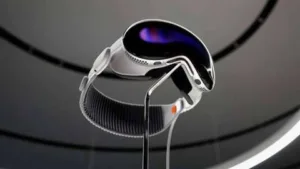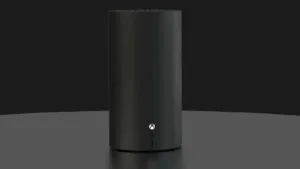Retro Review: Sonic Adventure 2 (2001)
Estimated reading time: 8 minutes
As Sega’s swan song for the Dreamcast, Sonic Adventure 2 represented the pinnacle of Sonic’s 3D adventures and delivered an ambitious mix of gameplay styles, a dual-sided storyline, and the introduction of fan-favorite characters. Released in 2001, Sonic Adventure 2 took the fast-paced action of its predecessor and expanded it into a cinematic experience that showcased Sonic’s trademark speed alongside varied, character-specific gameplay.
Gameplay & Mechanics
Sonic Adventure 2 streamlined and refined the gameplay mechanics of the first Sonic Adventure, dividing the game into two story campaigns: “Hero” and “Dark.” Players switch between multiple characters within each story, giving them the chance to experience the game from two contrasting perspectives. The Hero story follows Sonic, Tails, and Knuckles, while the Dark story stars Dr. Eggman, Shadow the Hedgehog, and Rouge the Bat. The dual-campaign structure not only provides narrative depth but also encourages players to explore both sides of the story for a complete experience.
The three gameplay styles are focused and distinct, each catering to different tastes. Sonic and Shadow offer high-speed platforming that remains the heart of the Sonic series. These stages prioritize momentum, skillful navigation, and plenty of thrilling loops and jumps. Tails and Eggman’s levels are mech-based shooting stages, where players traverse levels in walkers, blasting enemies and solving light puzzles along the way. Finally, Knuckles and Rouge engage in treasure-hunting missions, where they search for shards of the Master Emerald in open-ended levels, using radar to track down their targets.
Each gameplay style has been refined since the first Sonic Adventure. Sonic and Shadow’s stages are smoother and faster, with controls that respond well to quick changes in direction and speed, giving players more precision. The treasure-hunting stages have received mixed reviews for their challenge level, but the radar system and the verticality of levels like Aquatic Mine and Meteor Herd add an exploratory aspect. While the mech stages lack some of the series’ signature speed, they offer a solid shooting experience that breaks up the pace of the platforming levels.
Another staple feature is the Chao Garden, expanded in Sonic Adventure 2 to include Chao karate tournaments, additional customization options, and an even more complex breeding system. The improved Chao Garden is more rewarding and gives players an engaging, time-consuming side activity that significantly enhances the game’s replay value.
Level Design
The level design in Sonic Adventure 2 is a standout feature, showcasing some of the series’ most memorable stages. The game’s iconic opening level, City Escape, introduces players to the new gameplay style with a thrilling downhill boarding sequence, perfectly capturing the fast-paced action and personality of the Sonic franchise. The stage is filled with grind rails, loops, and a catchy background track, making it an unforgettable start to the adventure.
Metal Harbor and Radical Highway showcase Shadow and Sonic’s platforming prowess with a mix of fast-moving sequences and narrow, skill-testing paths. Pyramid Cave and Crazy Gadget add platforming challenges in varied environments, using gravity-altering gimmicks and switches to keep the gameplay fresh and challenging.
The game’s treasure-hunting stages offer large, vertically structured maps that encourage exploration. Levels like Pumpkin Hill and Meteor Herd are fan favorites for their atmosphere and music, though some players find the slower pace of these missions to be at odds with the game’s general sense of speed.
Sonic Adventure 2’s later levels test players’ skills with high-stakes platforming. Final Rush and Final Chase, the climactic stages for Sonic and Shadow, take place on orbital platforms in outer space, featuring narrow rails, enormous drops, and tricky jumps that demand precise timing. The game’s level design takes full advantage of the Dreamcast’s hardware capabilities, creating dynamic, visually exciting environments that keep players engaged from start to finish.
Graphics & Presentation
At the time of its release, Sonic Adventure 2 was among the most visually impressive games on the Dreamcast. The game pushed the hardware with vibrant, detailed environments and smooth character animations that showcased the power of Sega’s console. The cityscapes, jungles, and space settings are meticulously crafted, with dynamic lighting and textures that hold up well even by today’s standards.
Each character has expressive animations that bring them to life, with Sonic and Shadow’s high-speed running, Tails’ aerial maneuvers, and Knuckles’ gliding and digging abilities all smoothly rendered. The design of new characters Shadow and Rouge fits well within the Sonic universe, and their presence adds a fresh dynamic to the game’s storyline and visual style.
The cutscenes in Sonic Adventure 2 are ambitious, conveying the game’s more dramatic storyline with intense, cinematic sequences. While some animations feel limited by the technology of the time, the story presentation effectively draws players into the action, especially as the stakes escalate in the game’s final acts.
Sound & Music
The soundtrack in Sonic Adventure 2 is a key highlight, blending rock, techno, and hip-hop to create a memorable and fitting accompaniment to each stage. Jun Senoue and the Sega Sound Team crafted a soundtrack that has become iconic among fans, with standouts like “Escape from the City,” “Live and Learn,” and “Pumpkin Hill” perfectly capturing the tone of the game.
Each level’s music enhances the atmosphere, with each character receiving themes that reflect their personalities and storylines. Sonic’s levels are infused with upbeat rock tunes, while Shadow’s stages are accompanied by darker, moodier tracks. Knuckles’ stages, with their unique rap themes, and the heavier, mechanical sounds in Tails and Eggman’s levels all contribute to the game’s unique vibe.
Voice acting also improved over the first Sonic Adventure, and the game’s main cast delivers solid performances. Although some dialogue can be campy, the voice work helps to establish the distinct personalities of each character and enhance the more dramatic plot points.
Story & Characters
Sonic Adventure 2 stands out for its more mature storyline, introducing themes of identity, sacrifice, and heroism. The plot revolves around the emergence of Shadow the Hedgehog, a mysterious creation of Dr. Eggman’s grandfather, Professor Gerald Robotnik. Shadow’s motives and tragic past drive much of the Dark storyline, creating a compelling arc that culminates in a dramatic showdown between Shadow and Sonic.
The dual-story format allows players to view the story from different perspectives, weaving a more complex narrative as the two factions collide over the fate of the world. As the plot unfolds, both sides must unite to confront a greater threat: the Biolizard, an ancient, powerful creature, and the final boss, who must be defeated to save the planet from disaster. The introduction of Shadow and his moral ambiguity added depth to the franchise and made him an instant fan favorite.
The game’s climax, where Sonic and Shadow team up as Super Sonic and Super Shadow to stop the Space Colony ARK from colliding with Earth, is an epic moment in the series. This powerful finale, paired with the triumphant music of “Live and Learn,” delivers a fitting end to the story and reinforces themes of redemption and sacrifice.
Difficulty & Replayability
Sonic Adventure 2 offers a well-rounded difficulty level, with enough challenge to keep players engaged without overwhelming them. Sonic and Shadow’s stages provide plenty of high-speed thrills and require quick reflexes, while Tails and Eggman’s shooting stages are more methodical, offering varied difficulty. The treasure-hunting stages can be challenging due to their size and sometimes cryptic radar hints, but they reward players who enjoy exploration.
The game’s replayability is enhanced by the inclusion of hidden emblems, ranking systems, and the Chao Garden. Each level offers a ranking based on completion time and score, encouraging players to revisit stages to achieve higher rankings. The Chao Garden’s expanded features, including the ability to compete in Chao races and karate tournaments, add significant replay value and provide a rewarding side experience.
Legacy
Sonic Adventure 2 was the last Sonic game released for a Sega console, and it’s widely regarded as one of the best 3D Sonic games to date. The game’s blend of high-speed action, a dual-sided storyline, memorable music, and unique characters set it apart as a standout title in the series. Its legacy endures, with many fans continuing to celebrate Shadow, Rouge, and the darker narrative, which left a lasting impression on the franchise.
Final Thoughts
Sonic Adventure 2 is a milestone in Sonic’s journey, offering an engaging mix of gameplay styles, a powerful story, and unforgettable music that showcased what Sega’s mascot could accomplish in 3D. Its fast-paced action and memorable levels made it a beloved title, not just for Sonic fans but for gamers who experienced the Dreamcast era. Sonic Adventure 2 remains a must-play for anyone exploring the Sonic series and an essential part of Sega’s gaming history.
Rating: 9.5/10







